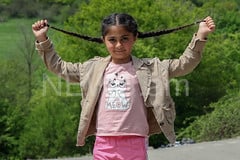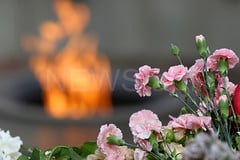
Even following April 24 the international press continues to publish articles on Armenians and Armenian Genocide of 1915. This time, the Italian newspaper La Stampa published an article, referring to the recent event that greatly resonated with the Armenians all over the world: twelve Armenians from Turkey decided to be openly baptized after their parents and grandparents had to conceal their identity for a century. The article reads, in part:
“Twelve Armenians from Dersim, the old name for modern-day Tunceli, an Eastern Province of Turkey, were baptised in recent days in an Armenian church in Istanbul. After the genocide of 1915, the families of this group of newly-baptised Christians had kept their Armenian Christian heritage secret for a century. Now, they have finally decided to overcome the fear of social prejudice and revive an identity they had long been denied.
The baptism was preceded by a 6-month catechism course and lessons on Christian doctrine. During the ceremony, two Christian weddings were also celebrated. One of the newly baptised Christians, Hovannes Minas – who received the sacraments of baptism and marriage on the same day – said he had wanted to fulfil a moral duty towards his parents and grandparents. “This is a very happy day for me,” he said in a statement to Armenian website Agos. “I was baptised and we got married in a religious ceremony on the same day, my happiness is indescribable. We never forgot about our religion. Now we can live freely.”
Until 1915 a third of Dersim’s population was made up of Armenians. They had an identity, their own form of dress, popular rituals and cuisine, which differed from those of other ethnic and religious groups. They were generally more cultured than the average person and there were many villages that had churches flanked by parish schools with links to the Armenian Patriarchate of Constantinople. The genocide of 1915 not only wiped out practically the entire Armenian population, but also their architectural imprint.
But a unique situation made it possible for some families or groups of relatives to save themselves or to return, albeit concealing their religious and cultural identity. Many Alevis had converted over the past centuries and so remembered their Armenian origins and had maintained close ties with the part of their family that had remained Armenian and Christian.
Many of them are now returning to their roots in a more or less official way. This is happening in Dyarbakir, where many Armenians who were Islamised during the genocide, now have two names: their official Islamic name and the name that links them back to their origins. The parents of the protagonists of this journey back in history, were very conscious of their Armenian identity but concealed it because the very word “Armenian” was taboo. This is understandable when one looks at the propaganda of denial and school textbooks which accuse Armenians of betraying Turkey in the 1915-1918 war, in their support of the “Allies” and Russia.
Quite big problems arose for many of those who grew up in Muslim families and possibly married Muslims. “When I was 25,” one of them says, “I was treated as a fileh,” a derogatory term in Kurdish which translates as “infidel”. The rediscovery of existing roots,- and possibly even relatives living in Europe and America – a language and a religion can pose existential problems, particularly if one’s wife and children have been brought up in the dominant culture.”






















